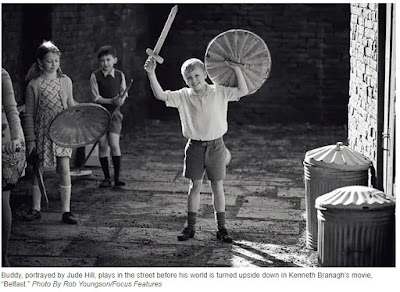Dec. 18, 2022, column from the Amarillo Globe-News:
Christmas is a time to eat, drink and be merry
By Mike Haynes
One of the reasons I like eating out is seeing the people at other tables in the restaurant.
Not that I watch them closely, but when glancing around the room, it’s gratifying to see people having fun.
Eating out can be for a special occasion, but even if not, it’s a treat to be away from the house, away from work – and ideally, away from worries. Smiles on diners' faces indicate that troubles often are forgotten, at least temporarily, when friends or family get together over enchiladas or shrimp or even a hamburger that someone else made for them. I like seeing those smiles.
The same is true of other escapes: a movie at the theater, a basketball game, a concert. Most of us have venues where we take breaks from humdrum – and sometimes difficult – daily life. It’s heartwarming to notice a couple laughing as they exit a funny movie or someone boot-scooting at a wedding reception.
The Bible doesn’t say much about Jesus having fun, but some of his stories and guidance hint at humor. I’m no ancient language expert, but according to “Father Tim” at clergyconfidential.com, Jesus’ criticism of religious leaders in Matthew 23:24 – “You strain out a gnat but swallow a camel” – includes a sort of pun. In Aramaic, gnat is “galma,” while camel is “gamla.” We lose a little irony in the English translation.
When Jesus performed his first miracle, changing water into wine, he was attending a wedding. It’s hard to imagine that he didn’t join in the festivities of a Jewish celebration. He was human as well as divine, and after all, if we believe he is God, well, he invented fun.
We’re in a month of Christmas parties. I’ve been to three this December, and I couldn’t help looking around at the joy on lots of faces. We laughed at our bad bowling at my wife’s office party, and it was nice meeting a coworker and her husband, plus finding out they are active in a local church.
My wife and her mother volunteer with the Amarillo SPCA animal shelter, and the people involved in that organization spend the year in the important work of saving dogs and cats. But at the SPCA Christmas party, all were at ease guessing how many M&Ms were in a container and displaying big smiles in a group picture taken by a restaurant server.
It also was nice when wait staff members received unexpected small gifts from the animal shelter volunteers.
Because I spent 25 years working with Amarillo College mass media students, I get invited to a lunchtime party each year with media students and faculty. It’s rewarding to see young people enjoying an hour or two away from writing news stories, editing video or studying for finals.
Some college students are confident and become the life of the party as gifts are exchanged, while the more shy ones tend to have apprehensive looks on their faces that fade away when they see their teachers being silly and playful. Who wouldn’t laugh when one gift was a box of rocks – with a small amount of cash taped to each one.
The Old Testament – the Hebrew scripture – mentions laughter more than the New Testament, and Jesus, whose life is described in the NT, certainly quoted and endorsed the OT. The sometimes depressing book of Job includes this verse: “He will yet fill your mouth with laughter and your lips with shouts of joy” (Job 8:21).
The famous statement in Ecclesiastes 8:15 says, “So I commend the enjoyment of life, because there is nothing better for a person under the sun than to eat and drink and be glad. Then joy will accompany them in their toil all the days of the life God has given them under the sun.”
Of course, much of Jesus’ message is serious business. But Christmas is one of those times when we can eat, drink and be glad, and for good reason. The God in whose image we were made visited us in person with Good News for all people.
If we believe what he said, then even in times of fear and uncertainty, we can smile.















